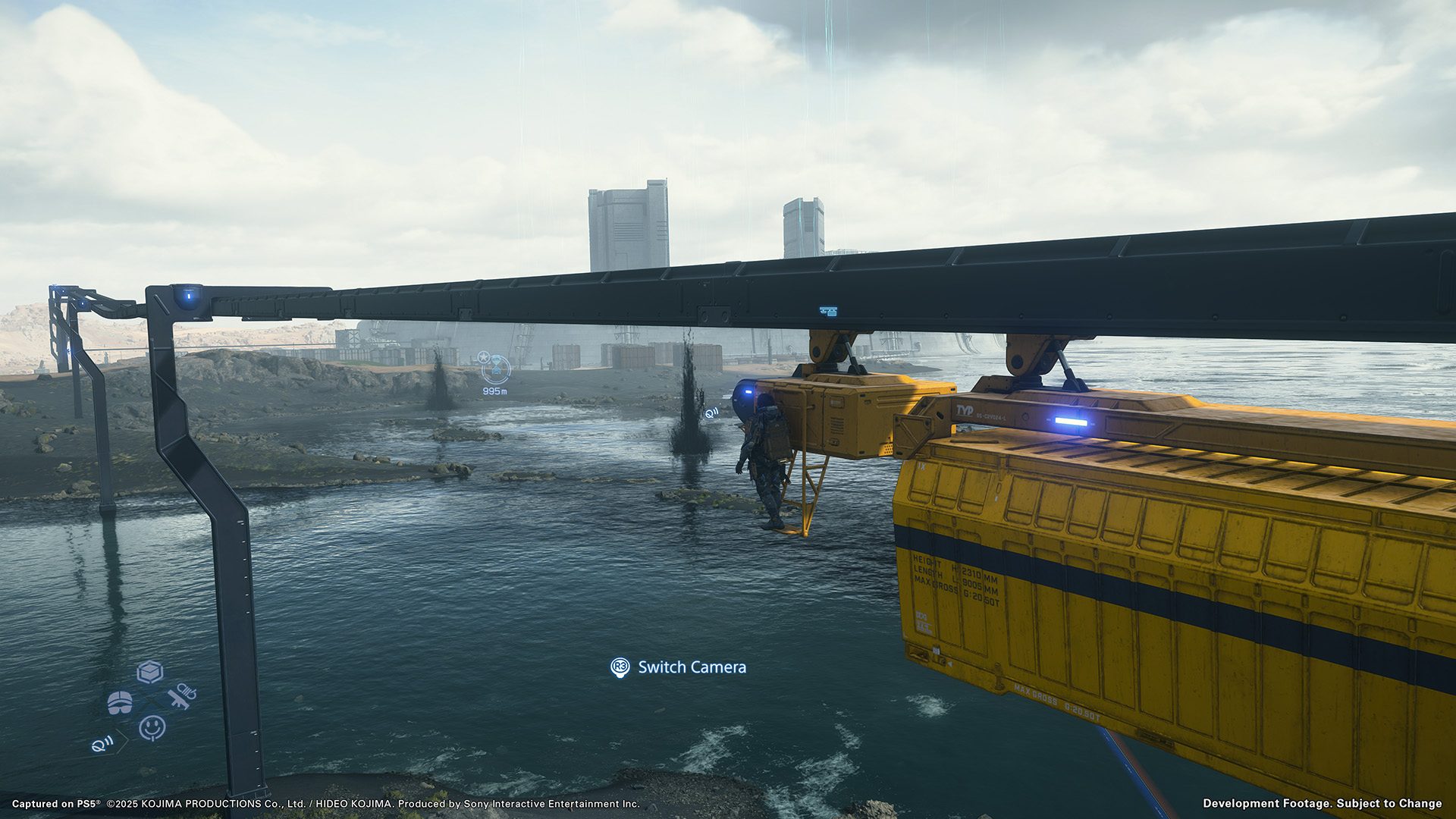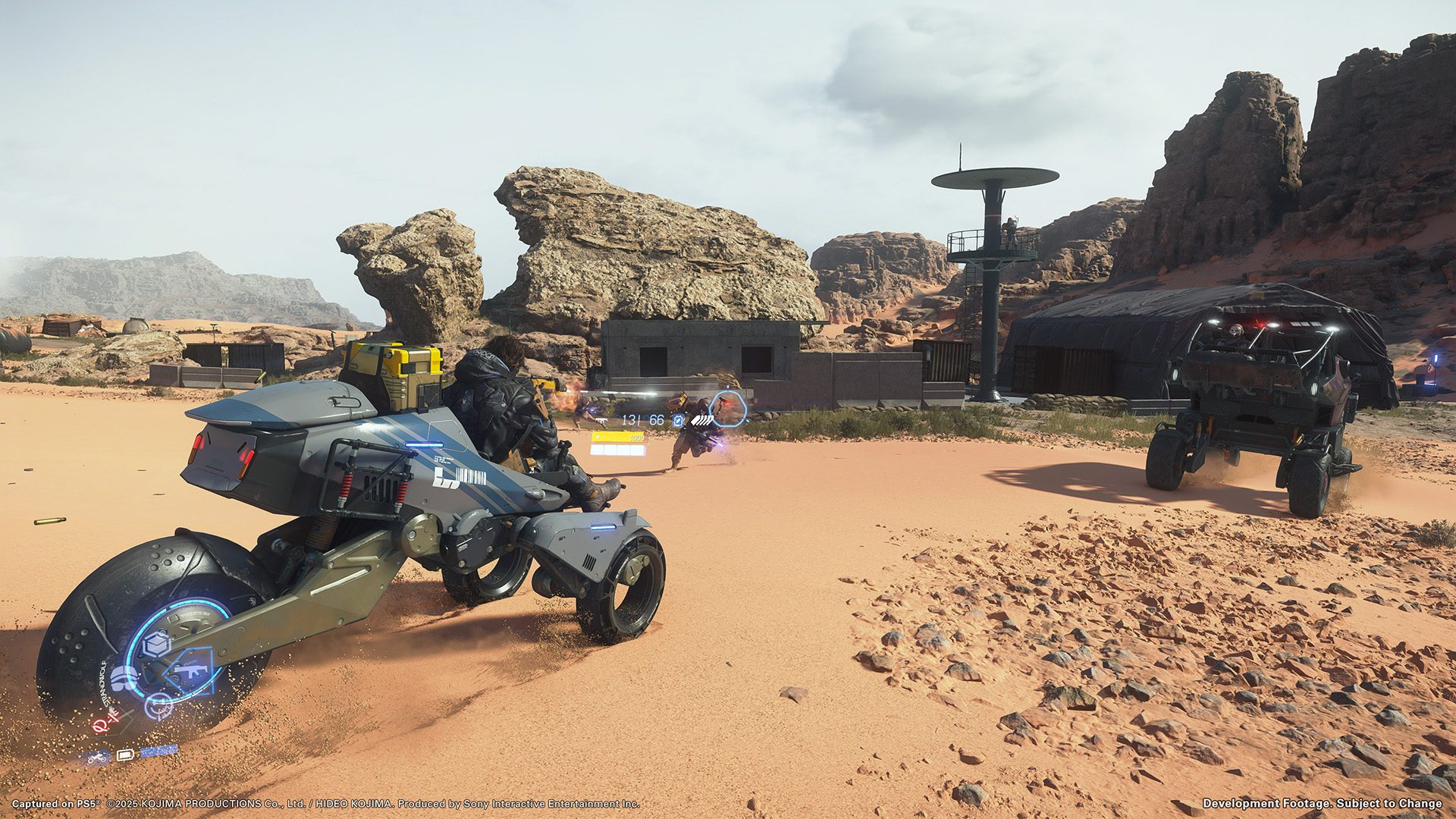Sam Porter Bridges crosses borders and continents in Kojima’s next chapter about connection, isolation, and the strange terrain in between.
Death Stranding 2: On the Beach isn’t just pushing its story forward—it’s charting a whole new map. The first game stayed within the fractured United Cities of America. This one? It opens in the deserts of Mexico and eventually washes ashore in a warped, dreamlike Australia. It’s not just a sequel—it’s an expansion, in scope, tone, and ambition.

Sam Porter Bridges starts off in hiding, living quietly with his daughter Lou in a remote part of Mexico. But solitude never lasts in a Kojima game. Fragile returns with a request, and Sam’s back on the move. The world has shifted: Bridges is out, automation is in, and the Chiral Network is down.

Mexico looks stunning and hollowed-out—dust storms, crumbling terrain, and half-buried ruins rendered in eerie, high-res detail. Traversal still demands balance, strategy, and nerves. But real-time weather, geological events, and deeper skill customization push the moment-to-moment further into survivalist territory.
Eventually, the path leads across the ocean to Australia. It’s not literal, but it’s recognizable: red deserts, strange fauna, jagged mountain ranges. It’s Australia as fever dream, not postcard—reimagined through Kojima’s surrealist lens. Blood boomerangs, anyone?
Beneath all the new terrain, the game is still wrestling with the same questions. What does connection cost? Who gets to control the infrastructure? APAC, a privatized delivery power, looms large as the latest metaphor for creeping tech and outsourced authority. Reconnecting the world may be noble—but it might also be naive.
Eventually, the story moves across the ocean to Australia. From the red deserts of Alice Springs to the frozen peaks of a fictional mountain in Western Australia, the terrain is exaggerated but unmistakable. Kojima’s Australia isn’t a parody, but a dreamlike remix—one that blends local detail (like bilbies, echidnas, and a blood-infused boomerang) with the series’ signature surrealism.
Thematically, Death Stranding 2 uses its settings to continue questioning what connection really means. APAC, a shadowy organization that now controls much of the automated delivery infrastructure, echoes real-world anxieties about privatized systems and surveillance. And with Sam once again tasked with rebuilding a broken network, the line between unity and control becomes less clear.

Drawbridge’s mobile base, the DHV Magellan, nods to the age of exploration—and everything that came with it. Colonization, power, purpose. Kojima’s never been subtle, and here the symbolism hits hard.

So yes, Death Stranding 2 is going global. But the real journey isn’t about reaching new places. It’s about figuring out what we’re building—and who it’s really for.
Death Stranding 2: On the Beach launches June 26.
